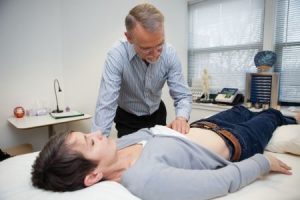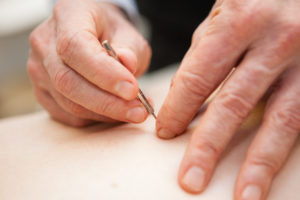Did you know that your digestive system is comprised of 10 different organs that cover about 30 feet and contain over 20 different cell types? That’s a lot of specialized work happening in your torso!
If you’re having digestive issues, that means there could be a whole lot of places where the system isn’t working properly. Anything from a poor diet, to stress, to a bacterial infection, to inflammation of the digestive tract could be causing you loads (no pun intended) of problems. GERD, IBS, Celiac disease, and gallstones all stem from different digestive problems.
How holistic medicine can help digestive issues
Whatever the issue, the practice of acupuncture looks at your body as an entire system to determine the problem—including the 10 different digestive organs. That means that holistic medicine can be particularly helpful in diagnosing and treating a range of digestive issues.
A few of the common ways that digestive issues are treated with holistic medicine include:
A carefully curated diet
Across both Western and Eastern medicine, it’s understood that what we put into our bodies is a leading influence on the health of our guts. In fact, Chinese and Japanese herbal medicines have been used in East Asia for thousands of years to help manage and improve function of our digestion.
You may have seen these natural remedies before:
- Ginger: Relieves nausea
- Turmeric: Has anti-inflammatory properties
- Milk thistle: Helps sluggish digestive systems
- Slippery elm: Soothes acid reflux
- Probiotics: Regulates digestion
When combined with an improved, high-fiber and hydrated diet, herbal supplement provided by a holistic healer can go a long way.
Yoga or stretching
Just like with your muscles, your digestive system benefits from being opened and moved to stimulate energy into the system. Spinal twists in particular are helpful, as you can even imagine your organs being “wringed” clean.
Try this routine and check the others to help get your body and digestive system back on track.
Targeted bodywork techniques such as tui na (a style of massage similar to shiatsu) and gua sha (a scraping-style of massage with a dull object) have also been helpful to patients at Gracey Holistic Health.
Acupuncture
There are multiple acupuncture points on the body that relate specifically to each part of the digestive system, ranging from your hand, to your elbow, to your foot, and (yes) to your stomach. If you’re experiencing problems, try a few out for yourself:
- Point 1, known as Conception Vessel (CV) 6 or termed the “sea of energy.” Two finger (thumb) widths directly below your belly button, slowly apply pressure with the tip of your finger. You can practice while sitting up or lying down.
- Point 2, known as Large Intestine (LI) 4 or “union in the valley.” Place your thumb on the top of your other hand, in the hollow or raised muscular (hand gripped) space between your index finger and thumb. Make small circular motions with your thumb. Be sure not to clench your fist while pressing this point when treating it, as this could cause unneeded discomfort.
Or, come in and receive a more comprehensive treatment! My style of non-insertive acupuncture, Shakuju Therapy, is particularly effective for a range of digestive issues.
In addition to acupuncture and other holistic approaches noted above, complementary therapies, including moxibustion, magnets, essential oils and health and lifestyle changes can be quite beneficial in helping ease digestive problems.

